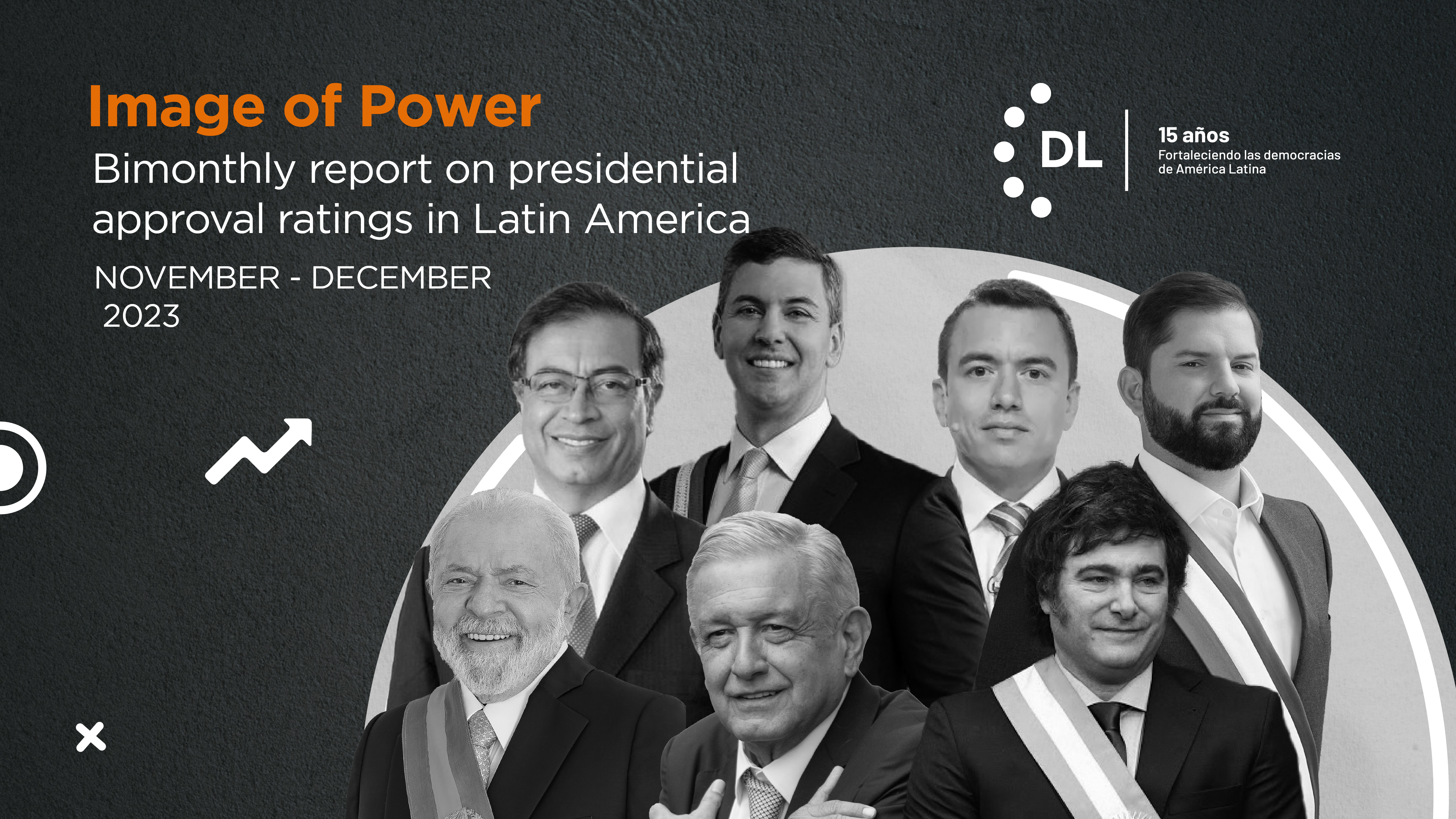Moment of truth: presidential approval ratings in Latin America

In politics, as in poker, cards and strategy make winners and losers. However, there are no jokers there.
In this issue we analyze how citizen support evolves according to the “cards” that each president has: the percentage of votes in the first round or single round (initial credit), the numbers in the legislature, the fragmentation of the party system and the ideological distance with opponents and potential allies. Based on the evidence of the last few years, we identified four common situations:
1. Majority governments or governments with strong benches. There have been few in recent years, but they confirm that the legislative majority is one of the most important cards. Ruling parties do not have incentives to include other forces in their cabinets, especially if they are divided, and are more likely to use the legislative route (AMLO, Bukele 2021-2024). However, the challenge sometimes lies in maintaining the cohesion of the political force itself. In the latter cases, support wears out or stabilizes at low levels (Fernández, Arce, Abdo/Peña).
2. Majority coalition governments (Boric, Bolsonaro / Lula, Lacalle Pou). The ruling party needs others to achieve majorities in Congress, or to improve its negotiating position. As a main bargaining chip it grants positions in the national cabinet. Ideological polarization and affinity with allies are central organizing factors that impact the stability of the coalition. In recent years, majority coalition governments have been relatively stable and their presidents managed to consolidate a more or less high cushion of support (Boric, Bolsonaro/Lula, Lacalle Pou). The same does not seem to happen when the coalition is ideologically heterogeneous, the support for the president faded quickly (Petro).
3. Minority governments, with a high level of fragmentation of the party system. Here we find cases where the president comes to power with a first round vote of 20% or less. Fragmentation, rather than ideological polarization, means that the president does not have many cards to negotiate with potential allies (Peru, Ecuador, Guatemala, Costa Rica, Cortizo). In practice, they lose political capital quickly and stabilize at levels similar to the percentage obtained in the first round (Castillo / Boluarte, Lasso).
4. Minority government, with high ideological polarization. This category includes cases that are somewhat anomalous but deserve a lot of attention. These are presidents who, despite having bad numbers in the legislature, choose not to form coalitions and manage in a more “autonomous” way or by decree. This game can go well with the “anti-establishment” discourse model. In contexts of strong polarization, the main asset of these presidents lies in the symbolic power of their discourse (Milei, Bukele 2019-2021).
